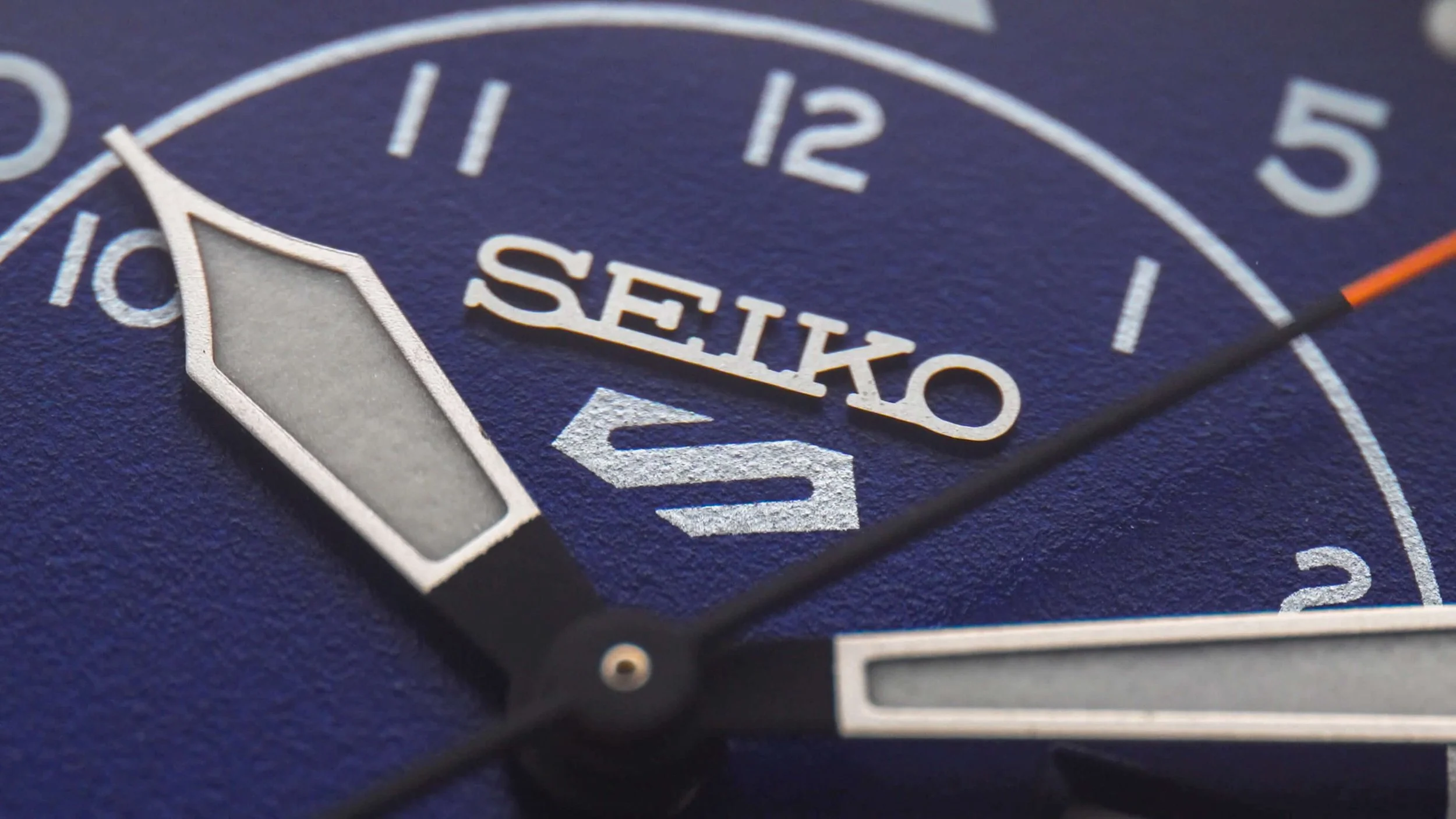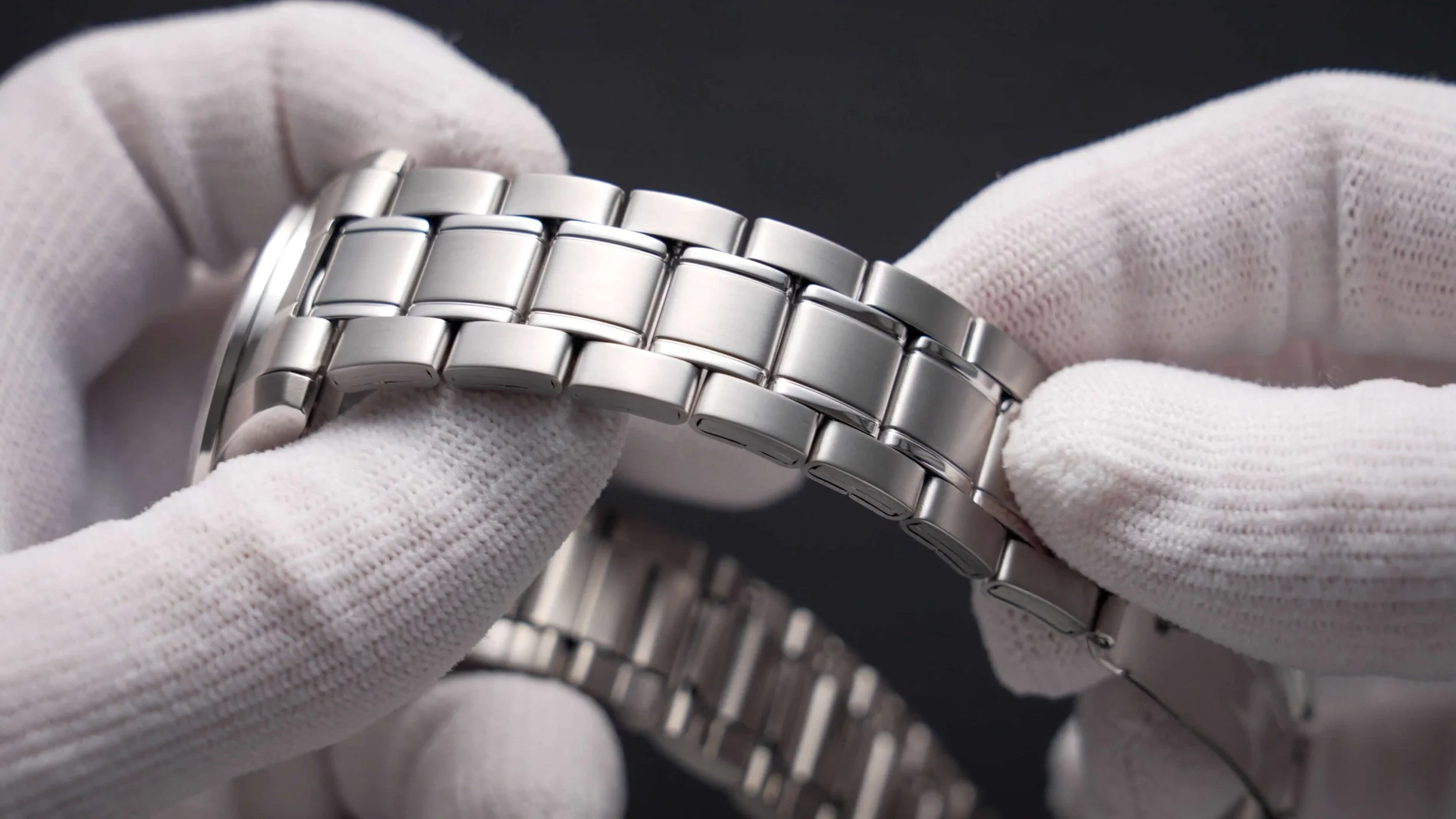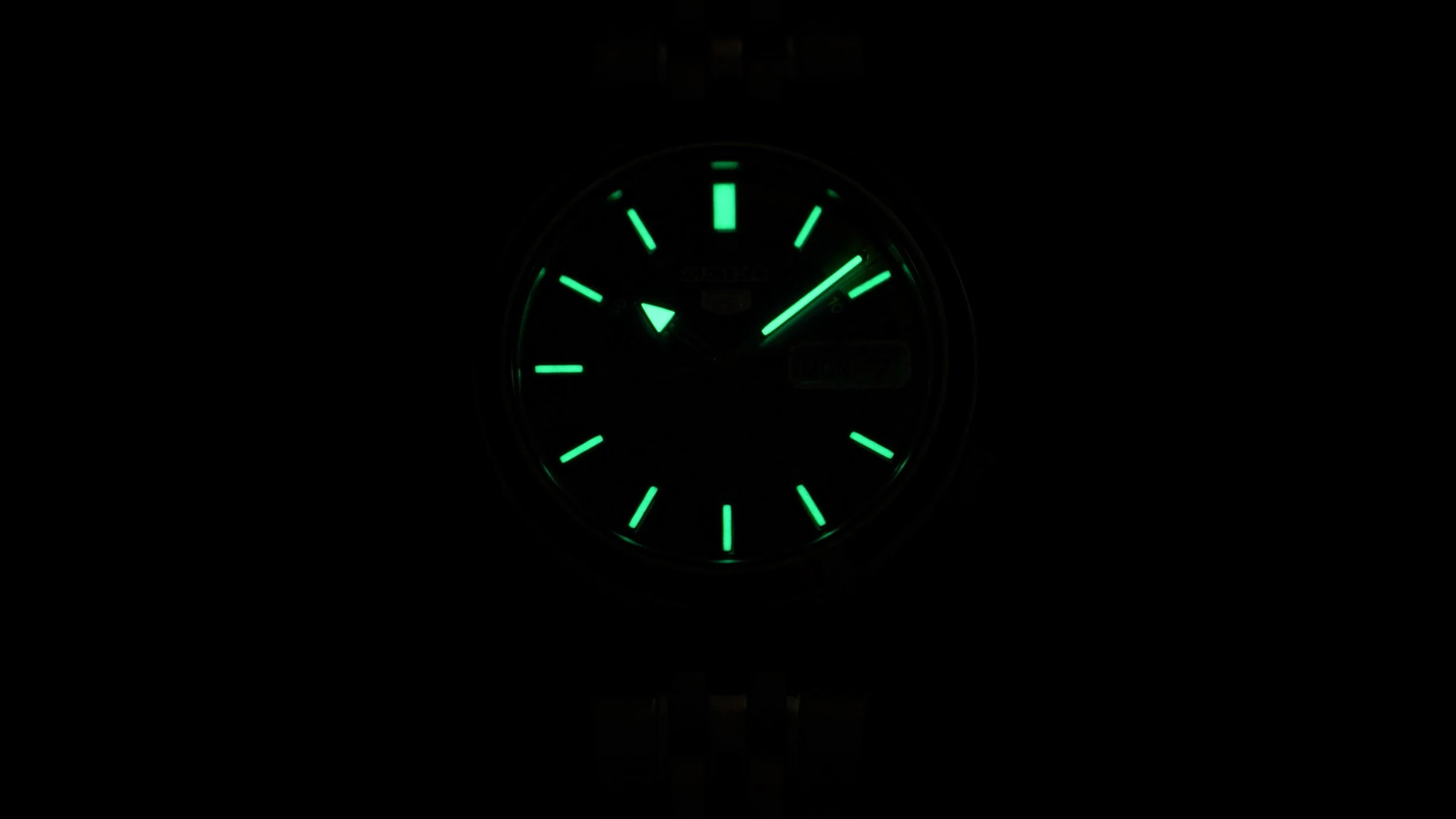Seiko SNK371K1 Review | The Coolest Seiko Speed Racer Is Soon To Be Discontinued!
(This page features affiliate links, for more information, click here.)
If you like watches but don’t want to spend much, pay attention. You see, I’ve found a great-looking budget Seiko that’s under $100 at the time of publishing. The only problem is it won’t be around much longer.
In this post, we’ll delve into the looks, specifications, and performance to see whether this is a bargain worth picking up or an outdated relic worth passing on.
Old Seiko 5 Logo
New Seiko 5 Logo
I say relic because this watch is part of the old-school Seiko 5 collection, predating the massive 2019 refresh, which saw new Seiko 5 models release with a different logo and minor upgrades. While this means the pre-2019 models like this are outdone in terms of fit and finish, they still come with one major upside…price. These days, a new Seiko 5 will usually set you back well over $200, but some of these last-gen Seiko 5 options are still obtainable for under half that.
Despite dozens of older models still being available online, many of which I’ve shown before, they are nonetheless a dying breed, as Seiko continues pushing its rebranded, overhauled lineup at retailers, meaning these older Seiko 5s are now only purchasable from grey market dealers. If you want to learn the difference between grey market and authorized dealers, check out this explainer on our website.
Fatally, Seiko reportedly discontinued the movement powering these watches many years ago. Essentially, whatever these sites have left in stock is all we’ll get. Cheap Seiko 5s are going bye-bye!
Seiko Speed Racer Review
Out of those worth pouncing on, I think this could be at the head of the field: the Seiko SNK371 (also available in white and black dial variants). I briefly featured this in my top Seikos roundup, but it deserves the full review treatment. In fact, this one is actually going to be more of a dual review, also featuring the SNKK27 (also available in white and black dial variants).
As you can see, the SNKK27 looks near-identical and that’s because it has the same dial and internals, just with a different case and bracelet. These watches, as well as the alternate color variants, have been known as the ‘Speed Racer’ for many years due to the bright, automotive-inspired design, which looks like it would fit right at home on the wrist of a daring driver.
Value For Money
Admittedly, it’s cool, distinctive designs like this that carry a handful of these older Seiko 5 watches, which, in 2024, aren’t super impressive on paper. 5 or 6 years ago, the steel construction and mechanical movement made these a value-packed proposition. However, with the rise of Chinese watch brands over the last half-decade, offering better movements, improved bracelets, or sapphire crystals for a similar cost, these entry-level Seikos have started to look more middle-of-the-road from a spec perspective.
The Seikos do at least remain a safe purchase. So long as you buy one from a reputable site and not an overseas eBay seller, for example, you’ll get a decent watch that you’ll likely have few problems with. The Chinese brands, meanwhile, can be very hit-and-miss, with some cheaper options straight up lying about materials in their online listings.
Case Construction
Out of the two Seikos, my favorite is probably the SNK371. It’s got the same Datejust-like steel case as some other Seiko 5s, with a reasonable level of finishing and a contoured profile that hugs the wrist better than many similarly sized alternatives. That said, the SNKK27 holds its own in this regard, with a similar curvature and thickness.
Seiko SNK371
Seiko SNKK27
Sizewise, the SNK300 series watches have a diminutive 37.3mm diameter and 41.7mm lug to lug, combined with a reasonable 10.5mm thickness. Meanwhile, the SNKK designations are a tad larger, at 38.5mm wide and with a lug-to-lug size of 45mm, providing greater wrist presence despite the identical thickness.
Design
Aesthetically, I prefer the former, whose sporty shape looks slightly more cohesive, though the latter isn’t offensive either, with a circular albeit marginally more dated design. The SNK300 models also have brushing atop the lugs, which is a tad more consistent with the bracelet versus that on the SNKK watches.
Overall, the level of case finishing is average at best, and despite the visual differences, neither model holds a water resistance advantage over the other, at 3 bar a pop.
Bracelet
Due to the larger link size, the SNKK bracelet feels less jangly, though both are still constructed of low-quality folded links, which make each feel cheap to the extent that I’d advise at least considering a third-party replacement.
Mercifully, they share the same folding clasp, which accommodates three micro-adjustment holes, permitting a good range of fine adjustments if you intend on sticking with the stock options. Still, these bracelets aren’t as nice as those fitted to some budget ‘homage’ brands.
Dial Design
Of course, the structural components aren’t the reason these older watches are still worth considering. As is immediately evident, it’s the quirky, bright dials that constitute the primary pull factor. Whether it’s the blue, black, or white model, you’ll be getting a unique, kerosene-fueled design that makes most racing chronographs look tame, with extreme colors and, most prominently, a high-contrast 20-minute track straddling the upper-right third.
This section of the face could almost pass as a rev counter or speedometer from a high-octane video game or movie, and satisfyingly, Seiko has perfectly matched the second hand with the color of this track on each model, furthering the illusion. These watches also boast a sporty, semi-skeletonized arrow hand, helping them stand out among the sea of Seiko 5s that rely on the ubiquitous dauphine or baton handsets. In contrast to many dive watches, this implementation is slim and sleek, ensuring it doesn’t dominate the remaining watch face. It could be made more legible, though I like how it slips in seamlessly.
The lumed hour markers are much more run-of-the-mill, with a standardized rectangle shape and limited low-light performance, though the inner 5-minute interval text is positioned and sized perfectly to add interest without distraction. Low-light performance is decent for an entry-level watch.
Perhaps the only visual element that could do with a revision is the day-date window at three o’clock. Of course, this is present to meet one of the original Seiko 5 design criteria set back in the 1960s; it’s why most Seiko 5 watches still have this window even today. That said, if Seiko had broken canon and removed it, I think we’d have some even better-looking watches on our hands, as the wide gap in the dial does disrupt the flow of the chapter ring, especially given its placement within that 20-minute track.
Overall, you get a glossy-looking appearance that, while not intricate, still has enough depth and dimension to give the watch a semi-premium look. The Hardlex crystal atop also doesn’t impact visibility and does offer marginally improved scratch resistance over standard mineral glass.
It’s worth noting that the racing theme exhibited by these watches is exactly that: theming. Thanks to the barebones movement within, these aren’t chronographs in any way, as you might have guessed from the lack of pushers, so the stylized timing bars are purely for show, as they can’t be used to time anything with a great level of precision.
Watch Movement
The automatic Seiko 7S26 inside is still reasonable for the money and can be seen through the exhibition rear. However, these days, it’s outclassed by more modern Seiko or Miyota alternatives that are often available for the same price. It lacks quality-of-life features such as hacking and hand winding but remains reliable and repairable, meaning it’s still a reasonable entry point for those after their first mechanical watch.
It’s this movement that was reportedly culled several years ago, starting the extinction countdown for these aging, sporty Seikos. The question isn’t so much “should you buy one while you can?”, it’s really, “how much should you pay?”. Inevitably, prices will balloon as supply starts drying up, and while they’re sweet watches for around the hundred pound or hundred dollar mark, their shortcomings would be much harder to overlook at two or three hundred.

















